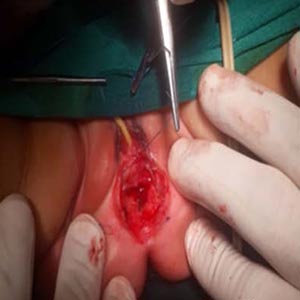Rectovestibular fistula: Which surgical approach is suitable? A randomized controlled trial

All claims expressed in this article are solely those of the authors and do not necessarily represent those of their affiliated organizations, or those of the publisher, the editors and the reviewers. Any product that may be evaluated in this article or claim that may be made by its manufacturer is not guaranteed or endorsed by the publisher.
Authors
The management of a vestibular fistula is a challenge for pediatric surgeons. We compared four different operative techniques in terms of postoperative complications, continence, and cosmetic appearance. This prospective, randomized, comparative study included female children with rectovestibular fistulae who were selected from patients with Anorectal Malformations (ARMs) treated between January 2016 and July 2020. The patients were randomly divided into four groups based on the operative technique: Trans-Sphincter Anorectoplasty (TSARP), Posterior Sagittal Anorectoplasty (PSARP), Classic Anterior Sagittal Anorectoplasty (ASARP), and modified ASARP. The incidence of vestibular fistulae among all patients with ARMs was 13.4%. The total number of patients with vestibular fistula was 112, including eighty-four (75%) with rectovestibular fistulae and twenty-eight (25%) with anovestibular fistulae. Associated congenital anomalies were found in nineteen (22.6%) patients. The percentage of parents satisfied with the cosmetic appearance and continence of their children was the highest after TSARP. PSARP had the lowest incidence regarding vaginal wall injuries. TSARP is the best operative technique for handling rectovestibular fistulae and is suitable for infants and children. In the TSARP technique, the external sphincter muscle can be preserved following complete dissection of the rectum without the need for a midline skin incision. A midline skin incision is required in the modified ASARP technique.
How to Cite

This work is licensed under a Creative Commons Attribution-NonCommercial 4.0 International License.
PAGEPress has chosen to apply the Creative Commons Attribution NonCommercial 4.0 International License (CC BY-NC 4.0) to all manuscripts to be published.






